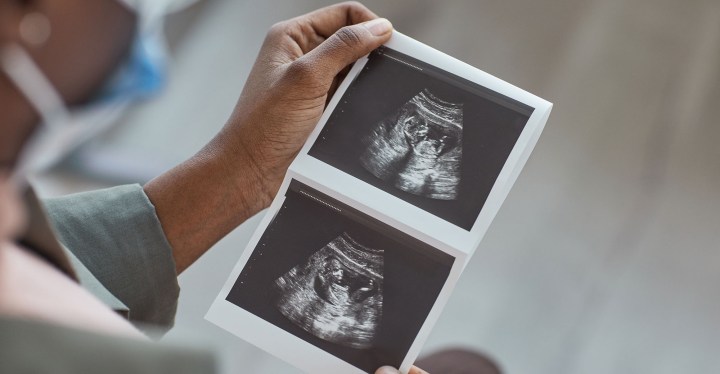MATERNAL NEWBORN HEALTH
Global progress towards reducing maternal, newborn deaths stalls — hope lies in ‘accelerating together’

Over the past decade, progress towards improving maternal and newborn survival rates has stagnated globally. The International Maternal Newborn Health Conference in Cape Town has brought together more than 1,700 delegates from around the world in the interest of aligning knowledge systems, accelerating progress and saving lives.
Global progress towards reducing maternal and newborn deaths and stillbirths has slowed significantly since 2015. Current trajectories of improvement make it unlikely that the 2030 targets for the United Nations Sustainable Development Goals (SDGs) on maternal, newborn and child mortality will be reached.
The International Maternal Newborn Health Conference (IMNH Conference) 2023 in Cape Town has seen more than 1,700 stakeholders from over 96 countries gathering to accelerate solutions to improve maternal and newborn survival and prevent stillbirths. In the words of Dr Queen Dube, chief of health services in the Malawian Ministry of Health and delegate at the conference, “One maternal death is one too many”.
“[We need] action, and… we must do it together, with the families at the core – the mothers, their newborns, the fathers,” she said.
“Behind this conference, which is the beginning of a movement, is the call for us to align. [We need to] align at the local level, align at the regional level, align at the global level, with one common aim: getting out of our comfort zone… and pushing the agenda that that SDG target should not just become a story — it should become a reality.”
The 2030 targets include:
- Reducing the global maternal mortality ratio to less than 70 per 100,000 live births;
- Ending preventable deaths of newborns and children under five years of age; and
- Reducing neonatal mortality to at least as low as 12 per 1,000 live births and under-5 mortality to at least as low as 25 per 1,000 live births in all countries.
However, there remains a long way to go in achieving these goals, according to a new report — Improving maternal and newborn health and survival and reducing stillbirth: Progress report 2023 — launched at the IMNH Conference.
The report, issued by the Ending Preventable Maternal Mortality Initiative (EPMM) and the Every Newborn Action Plan (Enap), found that an estimated 4.5 million women and babies die every year during pregnancy, childbirth or in the first weeks after birth, mostly from preventable causes.
It further stated that in order to achieve global 2030 targets, the average annual rates of reduction for the maternal mortality ratio, the stillbirth rate and the neonatal mortality rate would need to be 11.6%, 5.2% and 7.2%, respectively. Between 2010 and 2021, the average annual rates of reduction for the stillbirth rate and neonatal mortality rate were 1.8% and 2.2%. The rate of reduction for the maternal mortality ratio was 1.3% between 2010 and 2020.
“The burden of deaths is alarming, but there is hope for progress and opportunities for impact. If the SDG, Enap and EPMM targets are met, there is the potential to save at least 7.8 million lives (over 1 million women, 2.6 million stillbirths and 4.2 million newborns) by the end of this decade,” stated the report.
Dr Atul Gawande, assistant administrator for global health at the United States Agency for International Development, pointed to the Covid-19 pandemic as a key factor behind the stagnation of progress in improving survival.
“We have been making steady progress, decade after decade, in improving the survival of human beings as a whole, of women and children. But during the pandemic, it wasn’t just that the coronavirus killed people directly. It also killed health systems. You had disruptions of basic health services,” he explained.
“In order to recover essential services such as prenatal care, postnatal care, addressing risks at birth, family planning, and the other measures that assure maternal and child survival, we need primary health services… We have long under-invested in primary healthcare, and then primary healthcare has been among the hardest hit in health services.”
Measurement of progress on a subnational, national and global level is important to ensure targets for improvement of survival among women and babies are met, according to Dr Jeffrey Smith, deputy director of maternal newborn and child health at the Bill and Melinda Gates Foundation.
“Those targets, they need to be actionable at the subnational level, at the local level, so that people can manage towards those targets and understand their own progress,” he said. Examples of actionable targets include ensuring antenatal health coverage for 90% of women in a district, or that all pregnant women at a health facility have access to emergency treatment.
The Enap-EPMM report outlined five “priority actions” needed to reduce maternal deaths, stillbirths and newborn deaths:
- “Ambition and investments must match the Enap-EPMM targets;
- “Local implementation is crucial for national progress to reach all women and newborns;
- “Systems should be adapted to deliver quality care for women and newborns;
- “Women, families and communities should be partners in planning, monitoring and supporting services for accountability;
- “Data systems need intentional shifts to track and address coverage, equity and quality gaps.”

Health minister Joe Phaahla, on 9 May 2022 in Johannesburg, South Africa. (Photo: Gallo Images / Luba Lesolle)
What about SA?
Delivering an address at the IMNH Conference on Tuesday, 9 May, South African Minister of Health Dr Joe Phaahla said that different countries, stakeholders and private sector actors needed to “join hands” to ensure safe motherhood across the world, irrespective of the regions and economic situations women were in.
He referenced the Enap-EPMM population coverage targets for critical, high-impact packages of care, including that 90% of pregnant women should have four or more antenatal care visits; 90% of births should be attended by skilled birth attendants; and 80% of women and babies should receive postnatal care within two days of birth.
“It gives me pleasure to note that South Africa reached 80% coverage for postnatal care and 80% coverage in access to management of small and sick neonates,” he said.
“The challenges remaining are access to [antenatal care] visits, [which] is at 76% against the 90% target, and access to skilled birth attendants is 78.3% against the 90% target.”
The maternal mortality ratio in South Africa declined from 276 per 100,000 live births in 2007 to 87 per 100,000 live births in 2018, according to Phaahla. However, the stillbirth rate remains quite high in the country, at 20 per 1,000 births in health facilities.
“The interventions that are required will include, but are not limited to, broad multisectoral, socioeconomic interventions aimed at empowering women, as well as implementation of specific focused interventions within the health sector,” he said.
Phaahla emphasised the importance of addressing social determinants of health through interventions such as grants and collaboration with other government departments.
“The health system strengthening becomes our golden target because weaker health systems undermine universal health coverage… We need stronger governance and leadership at all levels including… good management of medicines, vaccines and commodities, research and development, appropriately skilled human resources for health [and] infrastructure development,” he said.
“Health facility infrastructure for providing quality care for mothers and children remains a challenge in some settings, and more needs to be done to ensure that our health infrastructure is adequate.” DM/MC




















 Become an Insider
Become an Insider
Comments - Please login in order to comment.